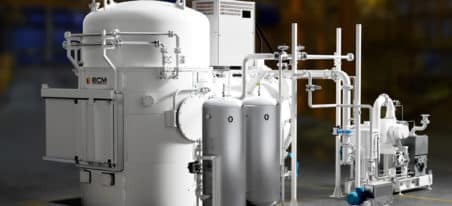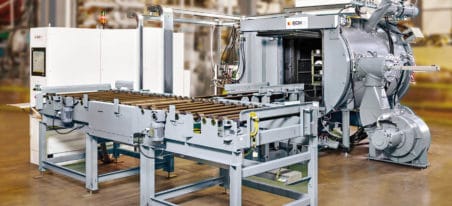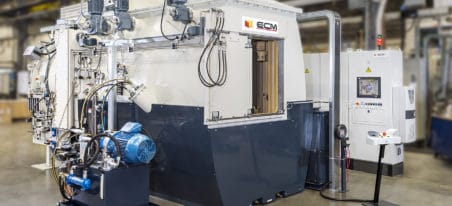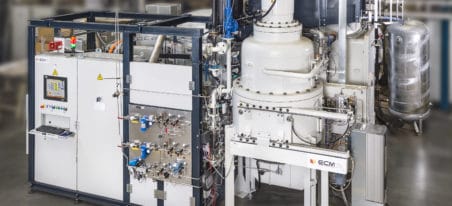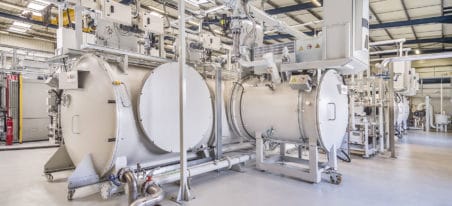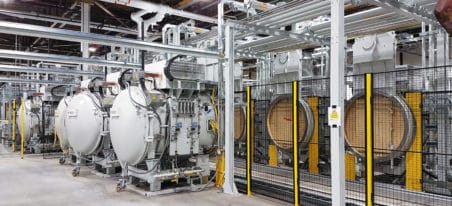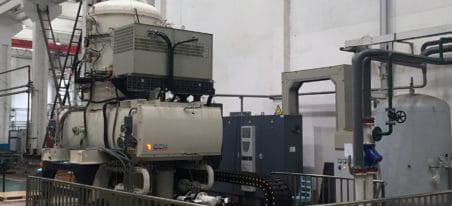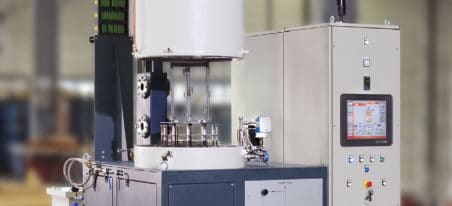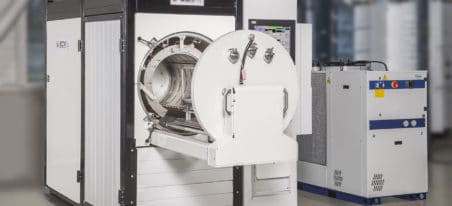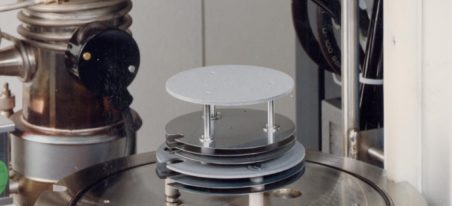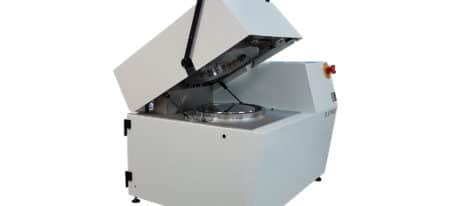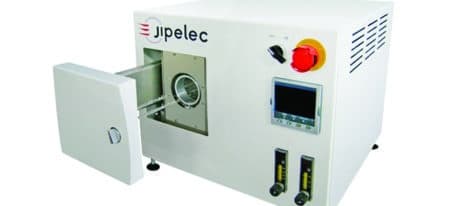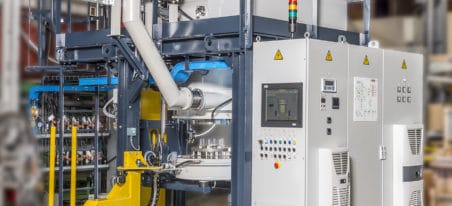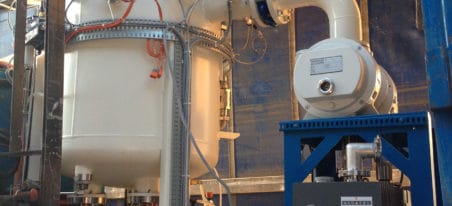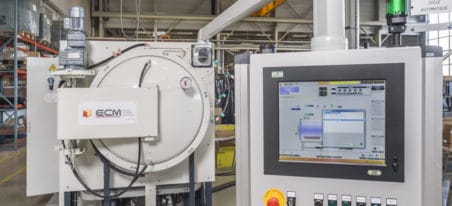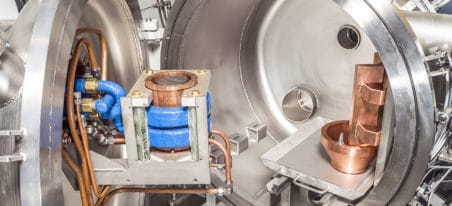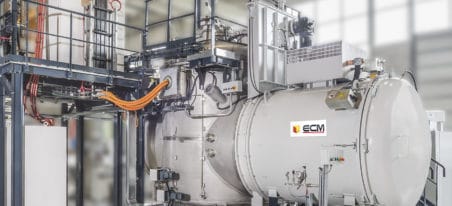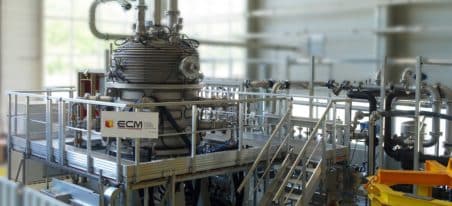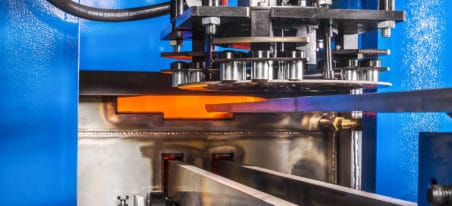The low pressure carbonitriding process (LPCN) is a thermochemical surface treatment in which nitrogen – obtained from ammonia NH3 dissociation – interacts with carbon during the 3 phases :
- Superficial surface fixing by chemical reaction of the carburizing element
- Inward diffusion
- Superficial hardening of the parts using martensitic quenching
- Increased compressive residual stresses
In low pressure, the efficiency of introducing nitrogen in the materials is proved when ammonia is introduced into the combustion chamber during certain stages of intermediate and final diffusion.
The number and length of carbonitriding steps depend on the depth and the concentration of nitrogen desired under the surface.
The process temperature can reach 960°C and is much higher than atmospheric carbonitriding. This allows deep diffusion of nitrogen – up to 1 mm – and nitrogen levels on the surface of up to 0.6%, with much shorter time cycles.
The gases produced by cracking are burned downstream of the pumping unit in order to meet environmental standards.
The low pressure carbonitriding process (LPCN) offers undeniable resistance gains to gearing strain.
It has been demonstrated that, in the case of transmission pinions, the combination of LPCN and staged gas quenching during the martensitic phase 180°C-200°C-STOP-QUENCH- produced strain resistance gains of about 30%, as shown by the Woelher curves regarding low pressure carburizing followed by direct gas quenching.
This method is very promising for future development of high torque transmissions.
ICBP furnaces range :
- ECO : to replace sealed quench furnaces
- MONO : single chamber furnace
- DUO : to replace integral quench and sealed quench furnaces
- NANO : the most compact installation
- FLEX : multi chamber furnace : modular concept
- JUMBO : multi chamber furnace : modular concept


